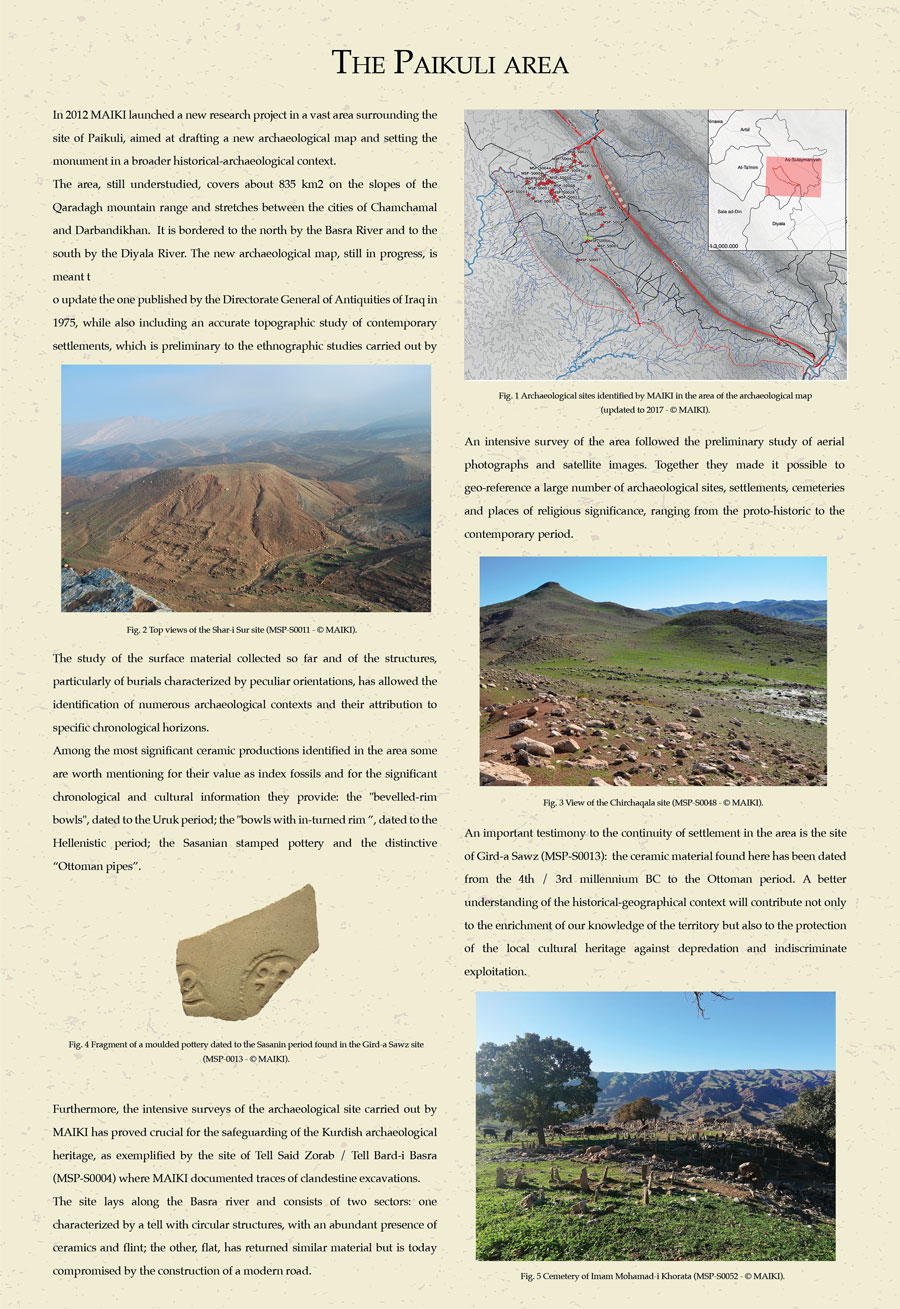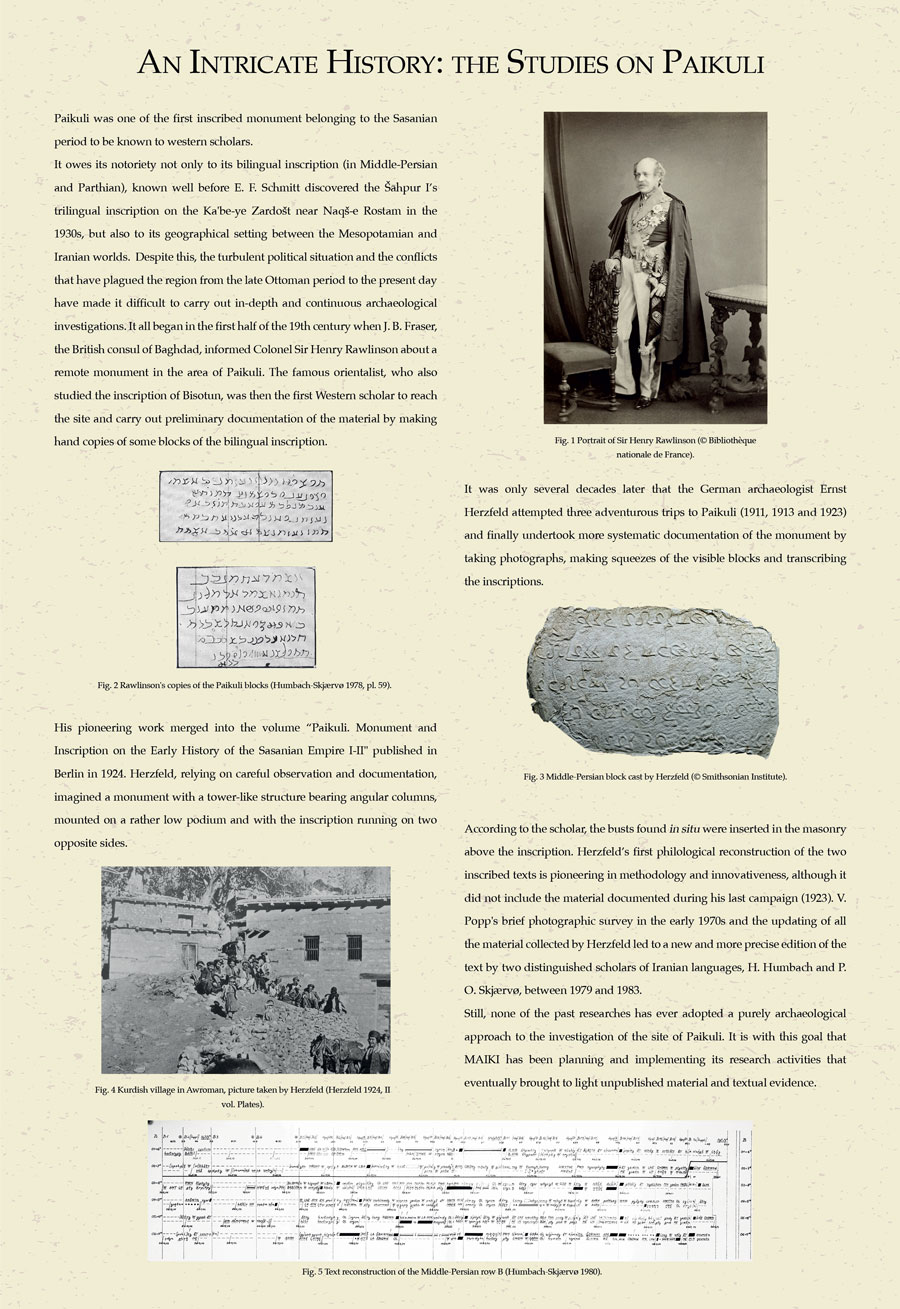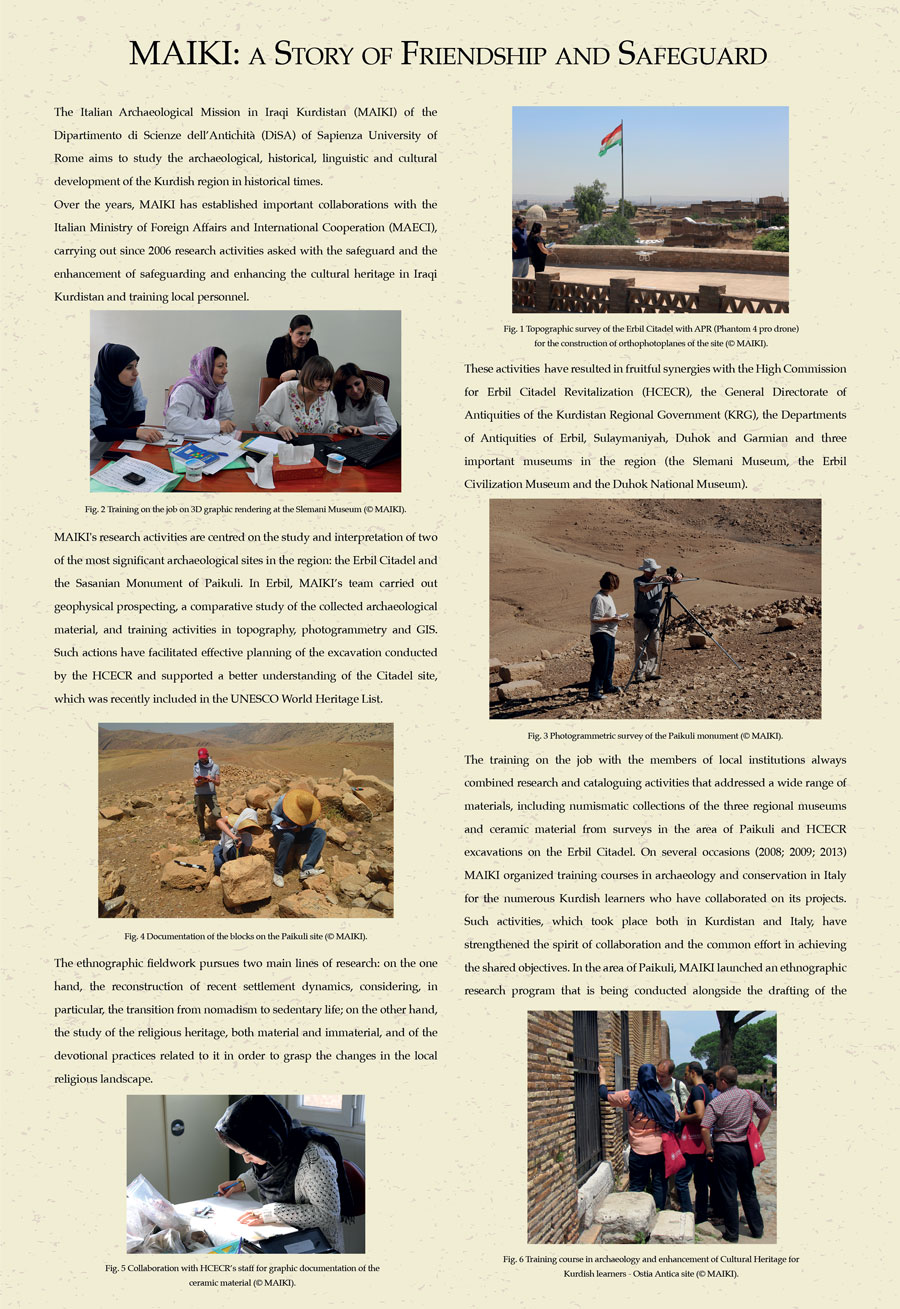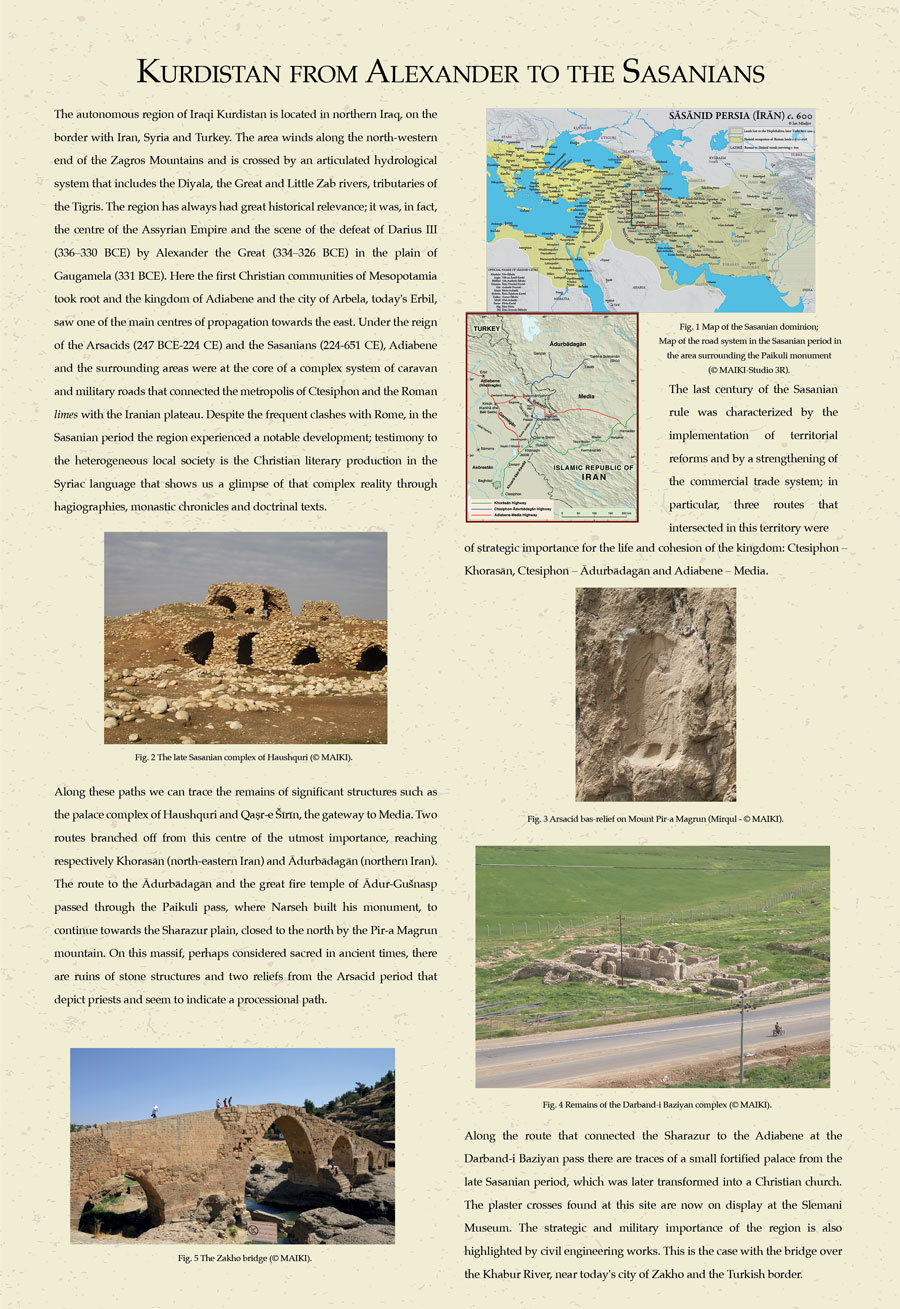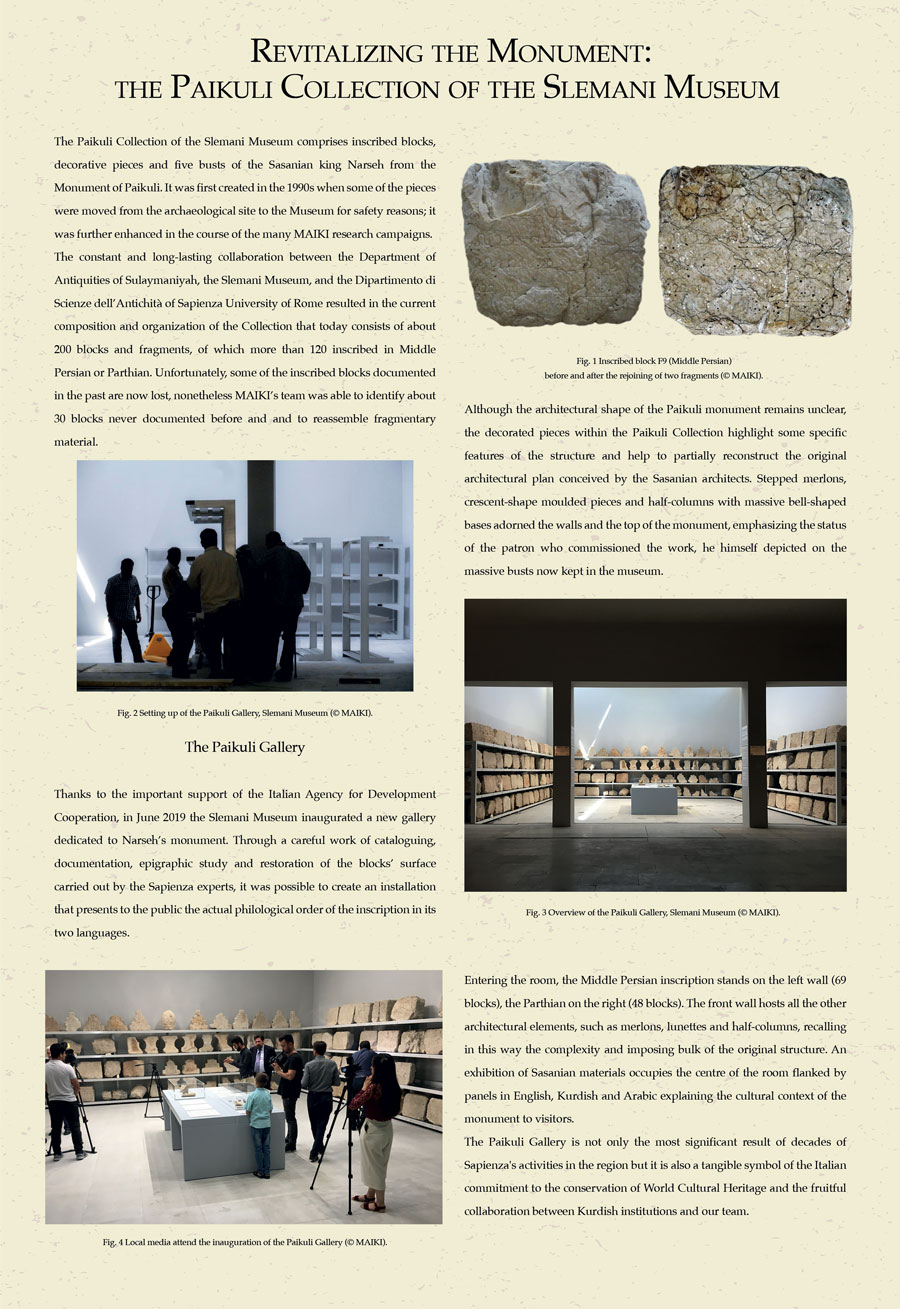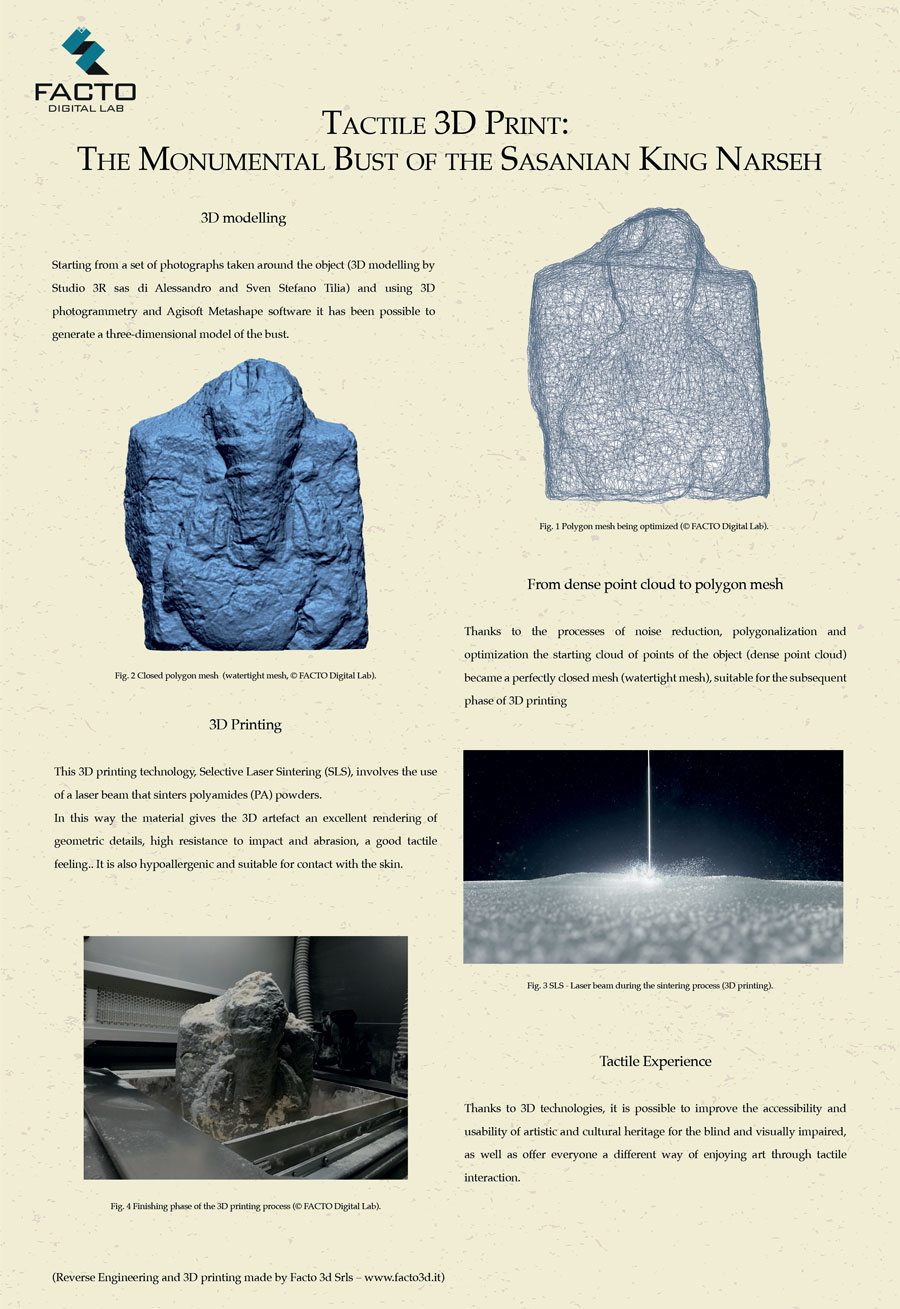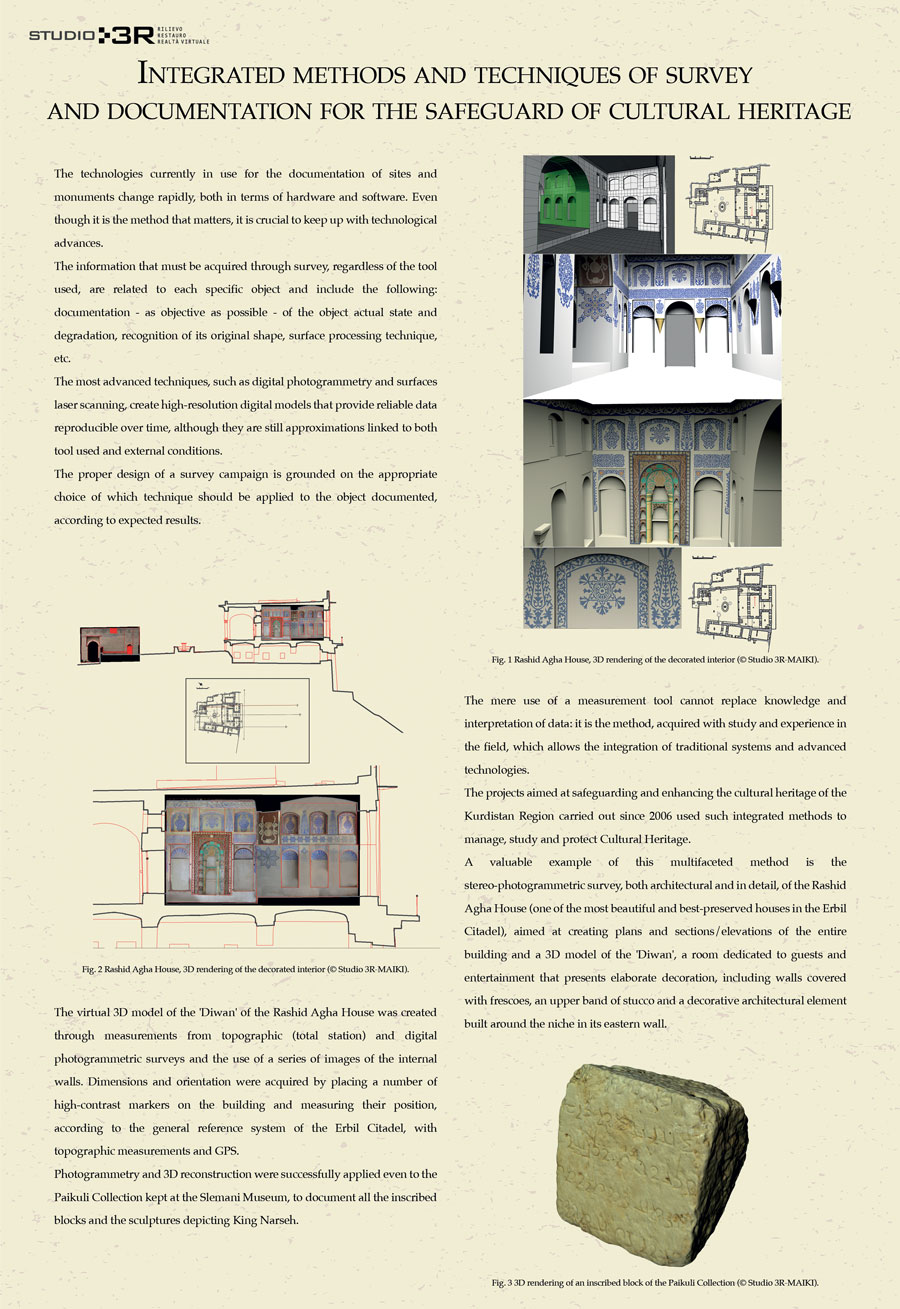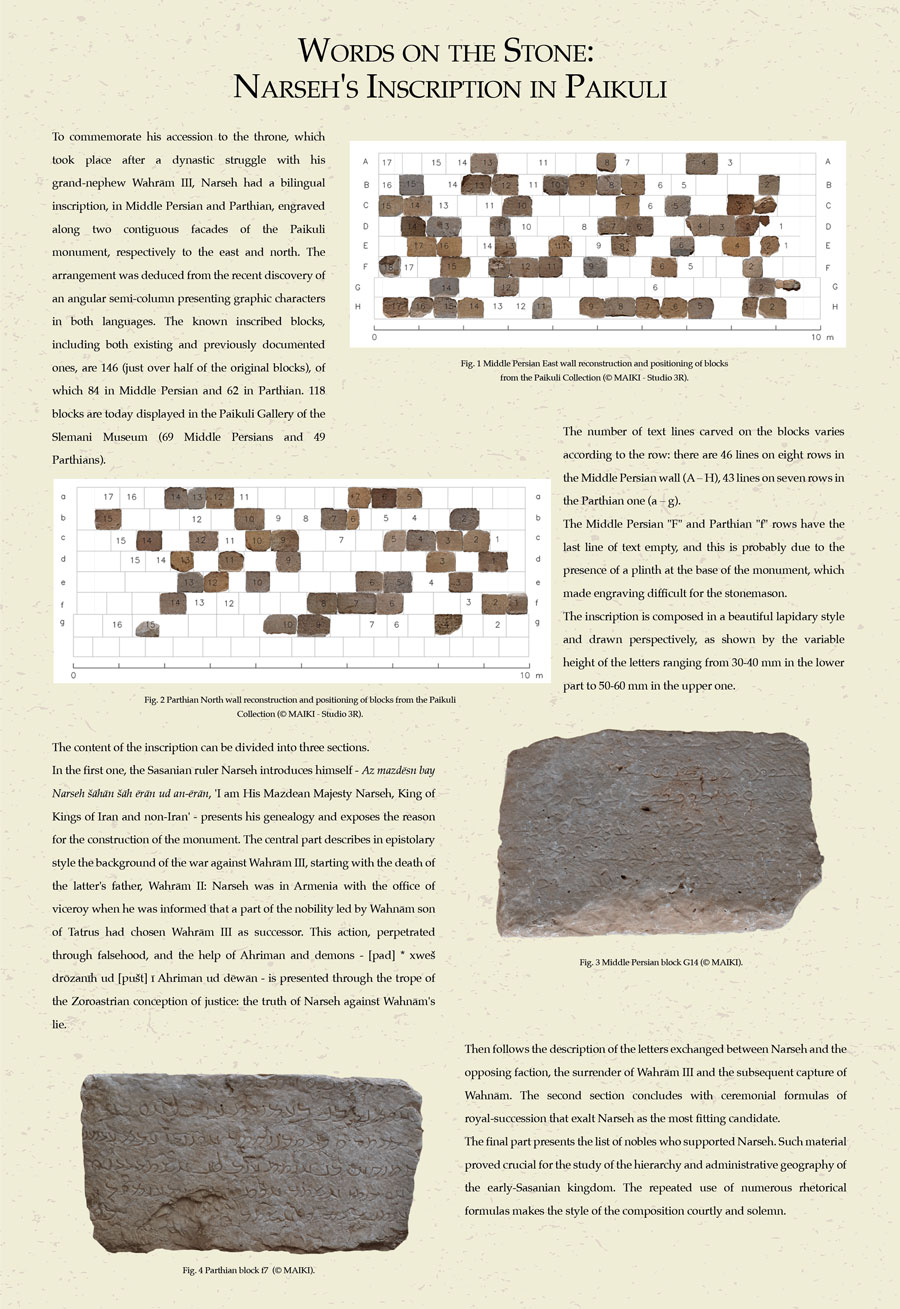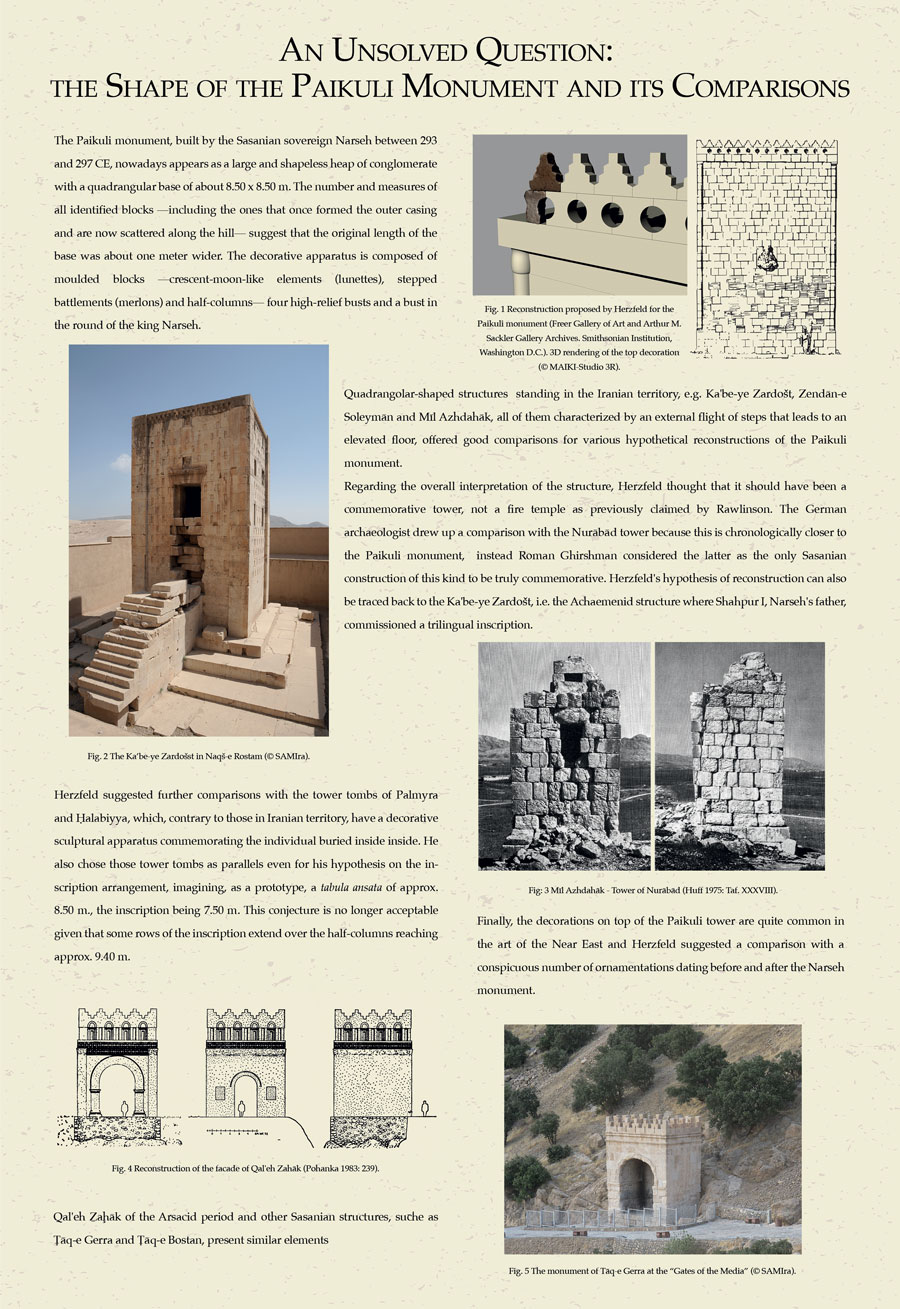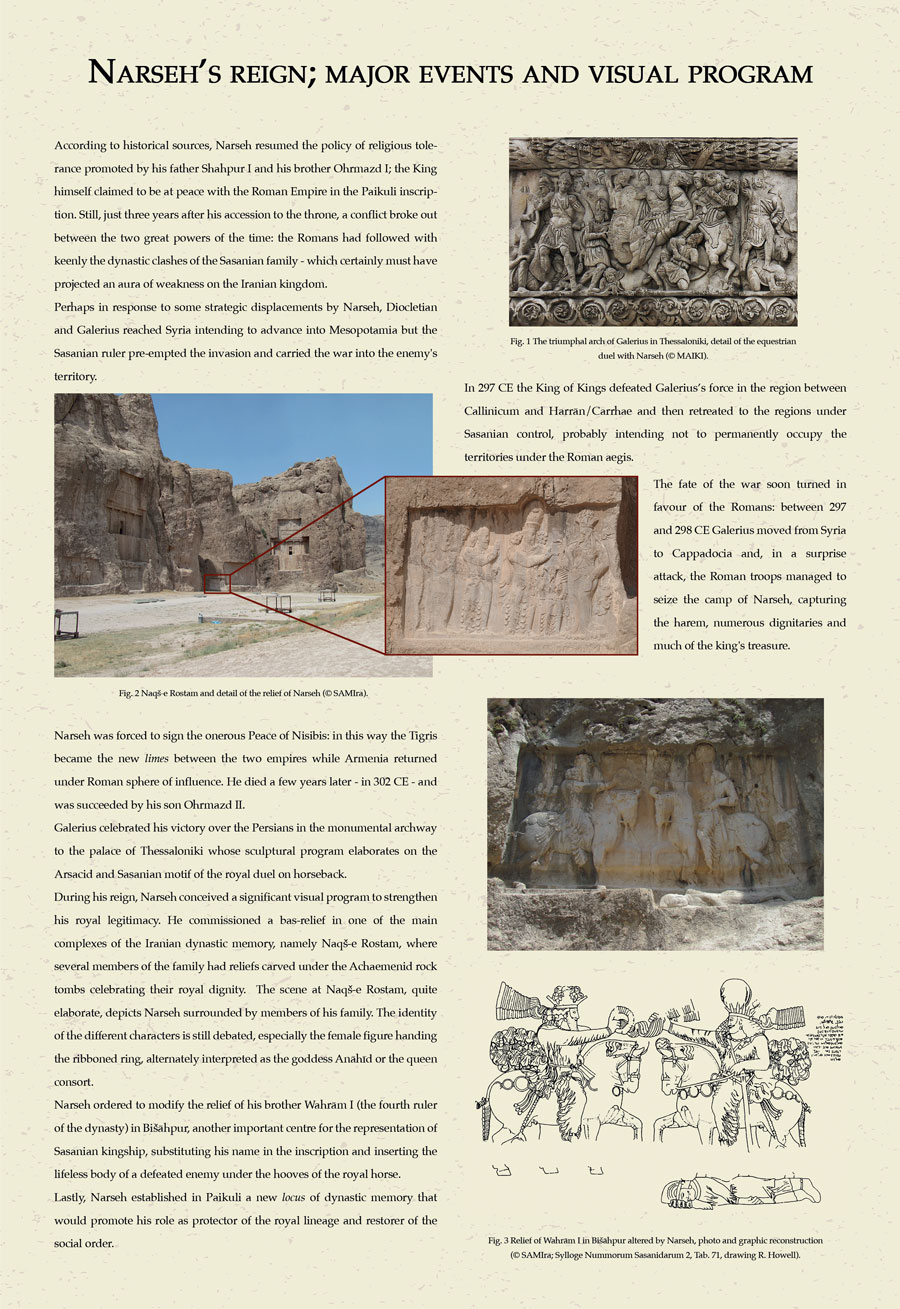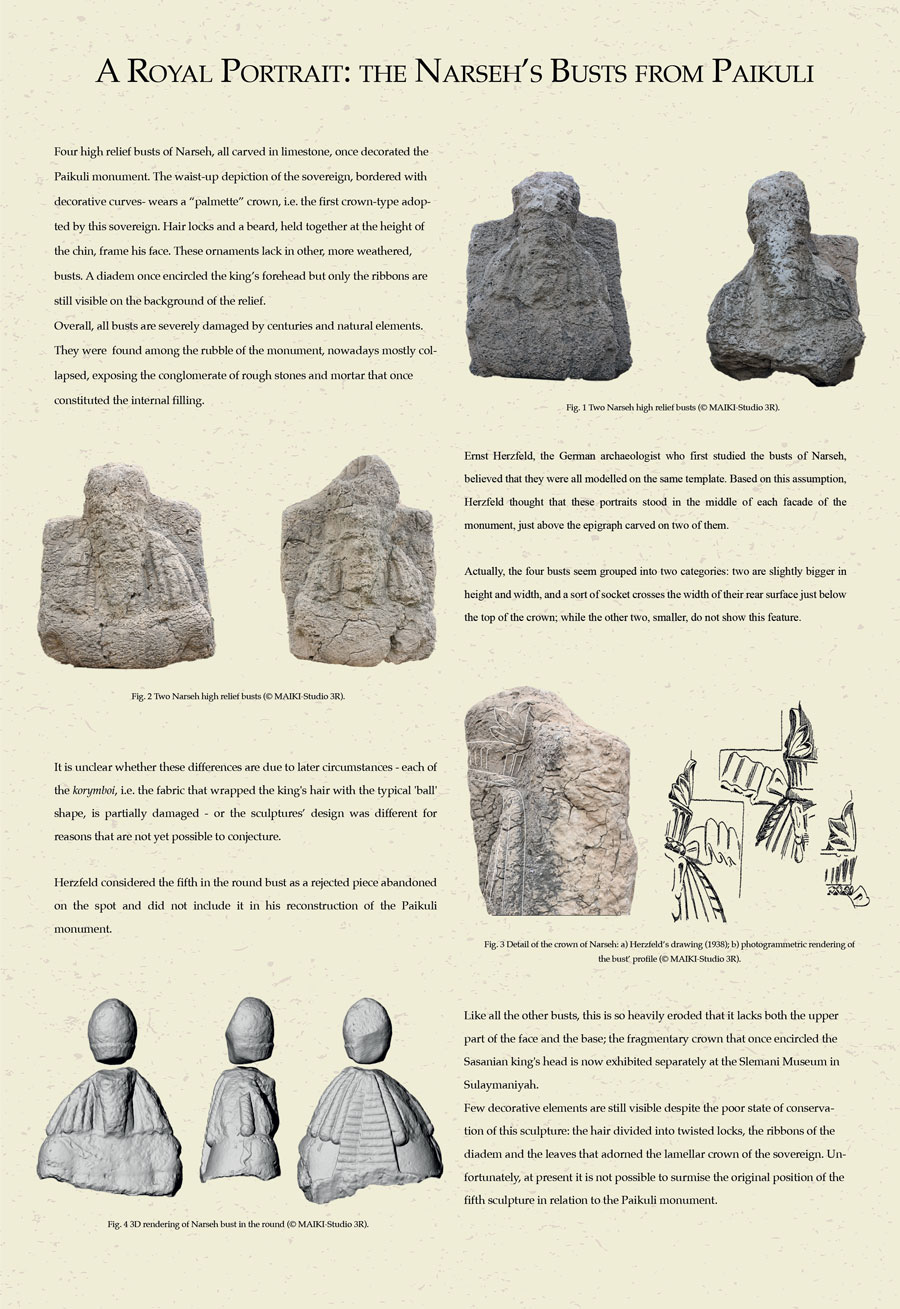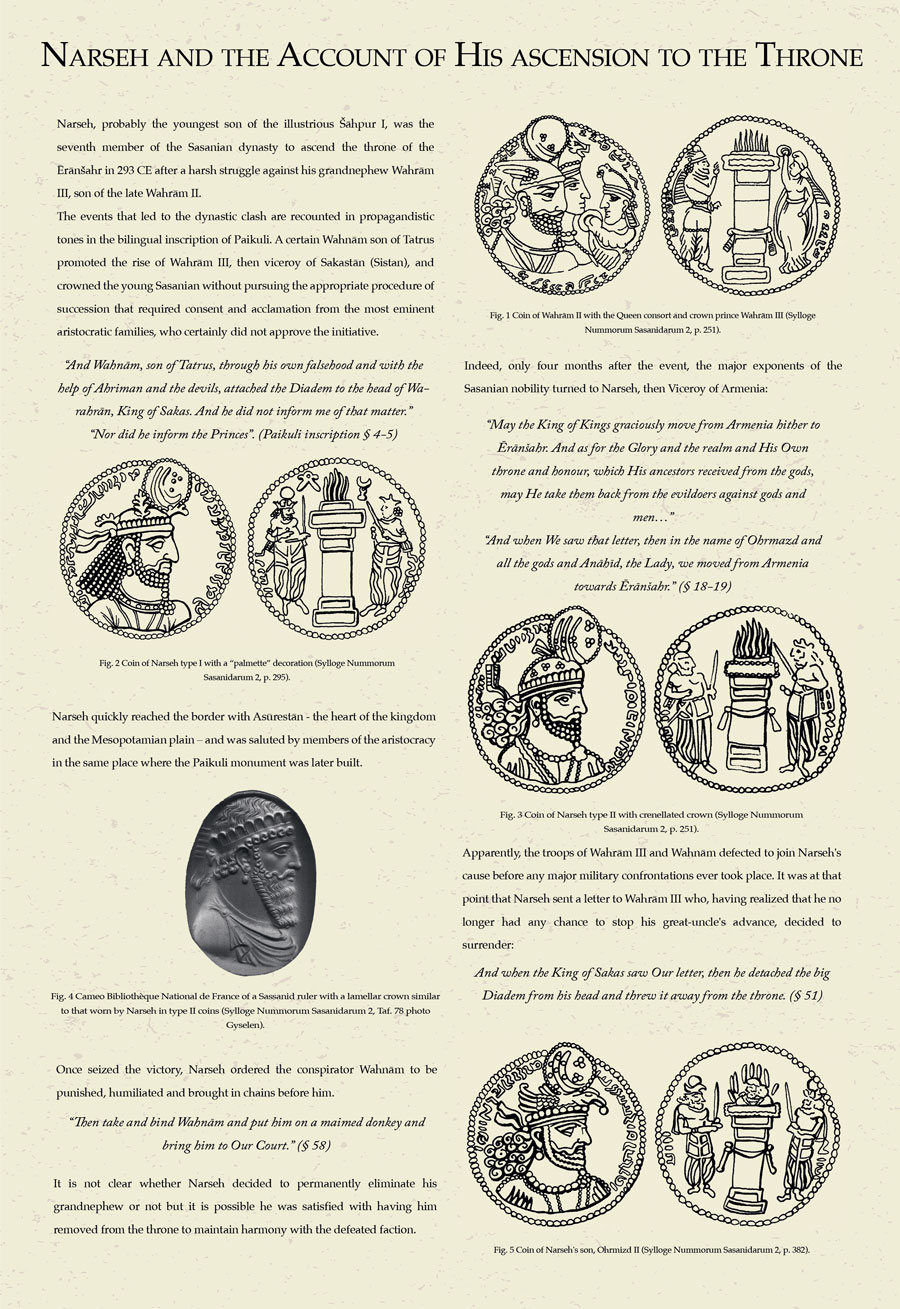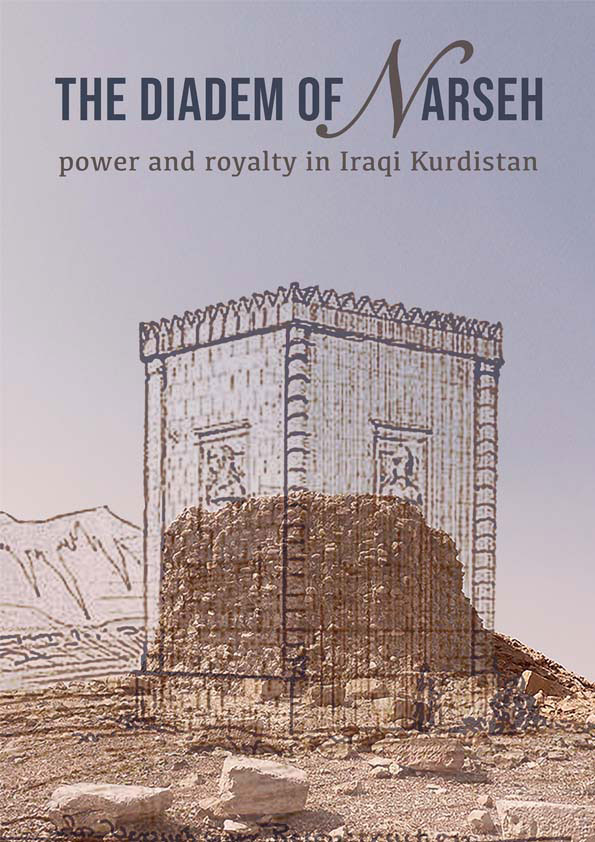
On Tuesday, 10th November 2020, the Italian Archaeological Mission in Iraqi Kurdistan (MAIKI) presented the material developed by the Sapienza students involved with its laboratory at the Museum of Classical Art (Faculty of Humanities – Sapienza University of Rome).
The event has been attended by Her Excellency Safia Taleb Al Souhail Ambassador of the Republic of Iraq in Italy, the Dean of Sapienza Eugenio Gaudio, the MAIKI Director Carlo Giovanni Cereti, the Director of the Sapienza Museum System Marcello Barbanera, the Dean of the Faculty Stefano Asperti and the Director of the Department of Sciences of Antiquity Giorgio Piras.
The exhibition, which includes 16 panels, aims to consistently express the more than ten-year-long collaboration between DiSA-Sapienza and the KRG Directorate of Antiquities in the safeguard, study, and enhancement of the archaeological and cultural heritage of the region. The exhibition’s core focuses on the Sassanian king Narseh (293-302 CE), who celebrated his accession to the throne through the bilingual inscription (Middle Persian and Parthian) and commemorative monument built in Paikuli, namely the site where the activities of the “Grande Scavo” Sapienza-MAIKI took place.
The exhibition’s path follows the multiple scientific methodologies and research approaches applied over the years to the study of the territory and its historical evidence. The tactile 3D printing of one of the Narseh’s sculptures -once decorating the Paikuli monument and now preserved at the Slemani Museum- offers a clear example of the potential of interaction between field documentations and the application of innovative technologies aimed at establishing new ways for the knowledge and accessibility of the Cultural Heritage.

